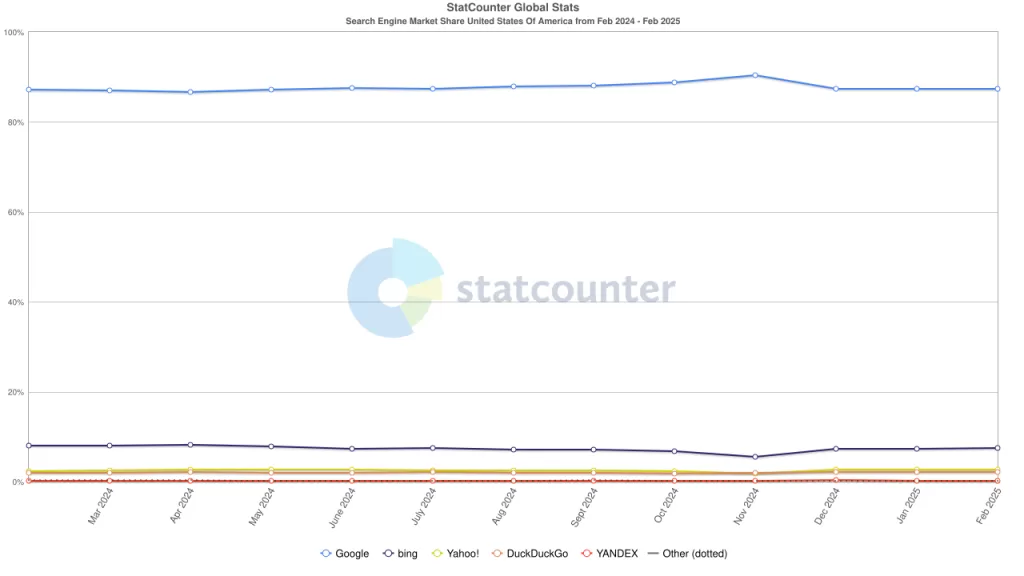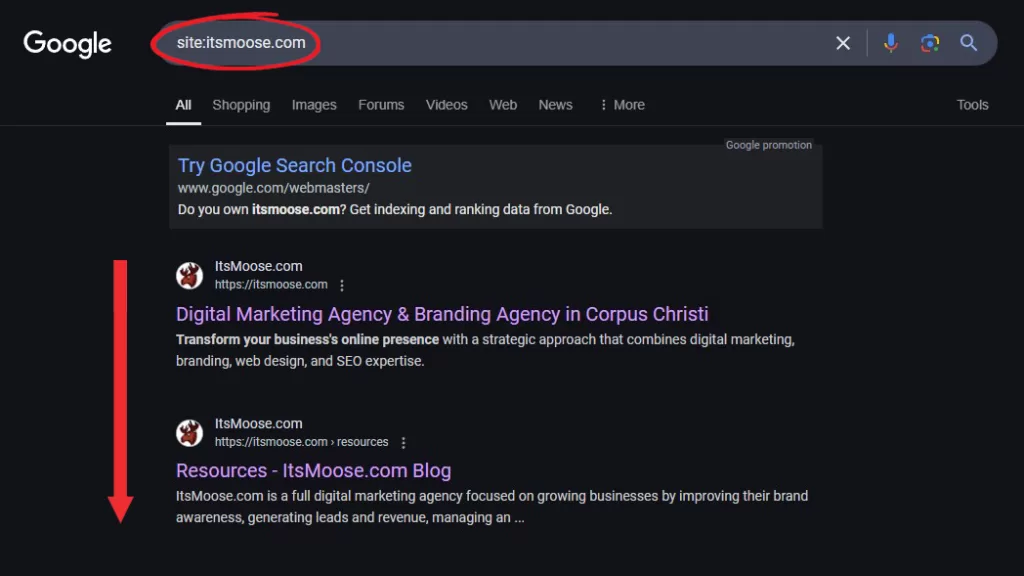Dominating the Top Position: A Comprehensive Guide to Improving Search Engine Rankings
Search engine ranking determines whether your business gets noticed or lost in the digital void. If you’re not showing up on Google search, your competitors are. Visibility matters. The largest search engine dominates with a staggering 88% market share as of February 2025. Business owners must take search engine optimization seriously to stay ahead.
Major search engines like Google, Bing, and Yahoo all have algorithms that decide where websites rank. A strong SEO strategy ensures your business appears when potential customers search for your products or services. That’s where a Corpus Christi SEO company can help. The right SEO agency in Corpus Christi knows how to boost your online presence and drive traffic.
Local SEO is a game-changer for small businesses. When customers search for nearby services, Google prioritizes businesses with optimized local listings. If you’re not focusing on local SEO, you’re missing out on potential customers. A well-executed digital marketing plan improves your search engine ranking and ensures long-term success.
This guide breaks down how search engine optimization works, why it matters, and how you can climb the rankings. Let’s get your business the visibility it deserves.

Crawling: Can Search Engines Find Your Services in Corpus Christi?
Getting your site crawled and indexed is the first step to improving your search engine ranking. If Google isn’t finding your pages, they won’t show up in search results.
Checking your indexed pages is easy. Use the advanced search operator “site:yourdomain.com” in the search bar of a popular search engine like Google. This search shows which pages are in Google’s index.
The results give a rough idea of your indexed pages. However, the best way to track indexing is with Google Search Console. This free tool helps site owners submit sitemaps, check index status, and fix crawling issues.
If your pages aren’t showing up, there could be several reasons. Your site may be new and hasn’t been crawled. It may lack external links, making it harder for Google to find. Poor navigation could prevent robots from crawling effectively.
Some sites block crawlers using directives in their code. Others lose visibility due to penalties for spammy tactics. Google’s core algorithm rewards sites with good link equity and strong core ranking systems.
Major search engines process hundreds of billions of web pages. Staying visible takes strategy. An experienced SEO company ensures your site gets indexed properly. A skilled SEO agency helps businesses stay competitive in the future of search engines.

Understanding Search Engine Rankings
Search engine ranking makes or breaks your online visibility. If customers can’t find you, they’ll find your competitors instead. Business owners must prioritize digital marketing to stay ahead in a crowded online space.
Google remains the most popular search engine, processing billions of searches daily. Its core ranking systems determine which websites appear at the top. A strong SEO strategy helps businesses climb the ranks and reach more potential customers.
Users type a search term into the search bar, expecting instant results. Google’s complex algorithm sorts through millions of pages in seconds. The search algorithm rewards websites with helpful content and penalizes those with dead links or poor user experience.
Every keyword search has a search volume that impacts how competitive it is. High-volume searches attract more competition, making ranking harder. Business owners need expert guidance from a Corpus Christi SEO company to improve their visibility.
Tools like Google Search Console provide insights into website performance. An experienced SEO agency uses this data to refine strategies and boost rankings on major search engines. Success online starts with understanding the rules and playing them well.
Why Search Engine Rankings Matter
High search engine ranking gives businesses an edge. More visibility means more clicks, more customers, and more sales. It’s that simple.
People use a popular search engine like Google hundreds of times a day. They expect a smooth search experience and fast results. Businesses that optimize for a traditional search engine reach more potential customers and stay competitive.
The average user doesn’t scroll past the first page. Ranking high matters. Google’s core algorithm evaluates external links, comprehensive content, and user experience. A strong SEO company knows how to meet these standards.
A solid SEO strategy focuses on long-term content that stays relevant. The future of search engines prioritizes fresher content and real value. High search volume doesn’t guarantee results unless your site delivers wide variety and quality.
The SEO community understands that success takes more than just keywords. Google’s core ranking systems reward sites with Google Search Console-verified performance. A skilled SEO agency ensures businesses stay ahead on major search engines.
The Connection Between Search Engine Rankings and SEO
At the heart of improving search visibility is search engine optimization (SEO), a multifaceted strategy focused on enhancing website relevance and credibility in the eyes of search engines. SEO aligns a website with search algorithms, increasing its chances of securing top positions in search results.
Effective SEO includes keyword optimization, content creation, link building, and user experience improvements:
- Keyword Optimization: Businesses should align their content with terms users frequently search for. This enhances the relevance of a website, improving its search engine ranking.
- High-Quality Content Creation: Search engines favor content that is valuable, accurate, and engaging. Quality content captures user attention, indicating to search engines that it is worth promoting.
- Link Building:Acquiring reputable backlinksfrom other websites increases a website’s credibility, further enhancing its search engine ranking.
- User Experience: A well-optimized website should be fast, easy to navigate, and mobile-friendly to ensure users have a positive experience.

Key Steps to Building a Search Engine Ranking Strategy
Creating a winning search engine ranking strategy involves careful planning and execution. Here are essential steps to guide business owners in achieving highsearch visibility.
1. Conduct Comprehensive Keyword Research
Identifying the right keywords is the foundation of search engine rankings. Business owners should research and use relevant keywords, considering both high-traffic keywords and competitive keywords. Google Search Console and tools like Ahrefs Domain Rating provide insights into search volume, helping businesses understand which keywords their audience uses. Including exact keywords and phrases naturally in the content boosts relevance, positioning the website as a valuable resource.
2. Create High-Quality, Relevant Content
To improve search engine rankings, focus on creating high-quality content that is informative and engaging. Long-form content often performs well in search positions because it offers comprehensive value to users. Ensure that each piece of content aligns with your audience’s needs, and aim to update content frequently to keep it relevant. Avoid keyword stuffing and instead focus on content optimization by integrating keywords naturally.
3. Optimize Technical Aspects of SEO
Technical SEO is crucial for improving search visibility Elements like URL structure, page load speed, and mobile responsiveness significantly affect how search engines interpret and rank your site. A clear URL structure improves readability for both users and search engines, while faster page speeds ensure that users stay on the site longer. Mobile responsiveness is essential since the vast majority of users access the internet on mobile devices. Search engines reward well-structured, user-friendly websites with higher search positions.
4. Implement a Strong Link-Building Strategy
Link building involves acquiring quality backlinks from reputable websites, which search engines interpret as votes of confidence. Use a variety of sources to build a diverse backlink profile, enhancing the website’s domain authority. High-quality backlinks contribute to link equity and help websites gain a better reputation with search engines, resulting in improved search positions.
5. Optimize User Experience and Design
User experience directly affects search engine rankings. Prioritize intuitive navigation, clear calls-to-action, and appealing design elements to engage users. Bounce rate and click-through rate (CTR) are important metrics that indicate user engagement. When visitors stay longer and interact more with the site, search engines interpret it as a positive sign, boosting search visibility.
6. Focus on Local SEO
There are different types of SEO. For businesses targeting specific geographical areas, local SEO is essential. Optimize your Google MyBusiness profile, encourage positive reviews, and ensure that business details are accurate across all online platforms. Local SEO is especially valuable for small and medium-sized businesses aiming to rank in local searches, as it connects them with users nearby.
7. Monitor and Analyze Performance Regularly
Tracking the effectiveness of your search engine ranking efforts is key. Tools like Google Search Console and Google Analytics offer insights into organic traffic, keyword performance, and other metrics. Regular analysis allows you to adjust strategies, focusing on what works best. This flexibility ensures that your search visibility continues to improve over time.
Cost Considerations for Search Engine Ranking Campaigns
The cost of a search engine ranking campaign can vary based on factors like keyword competitiveness and campaign scope. Small businesses can start with a modest budget, focusing on long-tail keywords and local SEO to gain visibility in specific markets. In contrast, larger businesses in competitive industries may require substantial resources to achieve higher search positions. While SEO investments may not yield immediate results, the long-term benefits of increased organic search traffic and higher conversions justify the expenditure.
Key Performance Indicators (KPIs) for Search Engine Rankings
Measuring search visibility success relies on tracking key performance indicators (KPIs). Here are essential metrics to consider:
- Keyword Rankings: Track how well your target keywords perform over time. This provides insight into your visibility for specific search queries.
- Organic Traffic: Increasing organic traffic indicates improved search engine rankings. This metric highlights how effectively your site attracts users through non-paid channels.
- Conversion Rates: Measure whether organic traffic converts into actions like purchases or sign-ups. High conversion rates signal quality traffic from search engine rankings.
- Bounce Rate: A low bounce rate suggests users find the content relevant, while a high rate may indicate content or usability issues.
- Backlink Profile: Acquiring backlinks from variety of sources is critical. Quality backlinks contribute todomain authorityand positively affect search engine rankings.
- Page Load Speed: Optimize load times to enhance the user experience. Faster pages improve engagement, making users more likely to stay on the site.
- Click-Through Rate (CTR): Evaluate CTR to assess how appealing your site’s listing is in search results. A high CTR indicates effective titles and descriptions.
Regularly analyzing these metrics allows business owners to refine their strategies, adapting to changing trends and maintaining strong search positions.
Why ItsMoose.com is the Ideal Partner for Ranking Success
Choosing the right partner for search engine ranking strategies can make all the difference. ItsMoose.com offers a comprehensive suite of SEO services, helping businesses optimize their websites for better search visibility. With expertise in both local and global SEO, ItsMoose.com customizes strategies to meet each client’s unique needs, from keyword research to content optimization and link building.
ItsMoose.com’s team stays ahead of industry trends, ensuring clients benefit from cutting-edge techniques. By focusing on high-quality content creation, technical SEO, and a strong backlink profile, ItsMoose.com empowers businesses to achieve and maintain high search engine rankings. Transparent reporting and a focus on measurable results make ItsMoose.com a trusted partner in helping businesses succeed in the digital landscape.
Whether you’re looking to dominate local searches or reach a global audience, ItsMoose.com is dedicated to crafting a strategy that aligns with your goals, improves your online presence, and boosts your search engine rankings.




